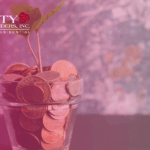The real estate industry is a capital-intensive industry where one wrong move can inflict heavy losses. One way to avoid losses in real estate is to evaluate the cashflow potential of a property before parting ways with your money and signing the document of ownership. As a smart investor, you have to be certain if you will have positive cash flow or negative cash flow should you purchase the property. In this article, we will be walking you through how to evaluate that property before completing your next purchase.
Why do you need to evaluate a property’s cashflow before purchase?
- To assess the financial viability of the asset:
Your property investment decision is usually fueled by a desire to earn returns on investment (ROI). However, a common mistake many real estate investors make is that they are thrilled by the net income to be generated without analyzing the potential cost of operating the property. This is where terms such as positive cashflow and negative cashflow make a difference.- Positive cash flow:
When you spend less money managing and operating a property than you generate income from the property, you can say it has positive cash flow. Positive cash flow is good for you because it gives you enough money to settle the mortgage and enjoy profit. - Negative Cashflow:
A negative cash flow, on the other hand, is every investor’s nightmare, but many unsuspectingly walk into it. When you spend more money operating a property than you generate in revenue, the property is said to have negative cash flow. This can result in financial strain and, sometimes, debt or extra funds to cover some expenses.
- Positive cash flow:
- To assess potential risks:
Cash flow evaluation helps potential asset owners assess the ability of the property to generate enough revenue to cover unforeseen expenses such as repairs, maintenance, and the effects of natural disasters. Also, a positive cash flow encourages investors to purchase a property even if they anticipate a different market condition. - Portfolio planning
Assessing a property’s cashflow potential helps you as an investor to know if the property is worth including in your long-term goals or not. A proper understanding of its potential cashflow can also help you decide if the property is best fit for retirement planning or as an active wealth contributor.
By now, you already know why evaluating a property’s cashflow before purchase is important. Now let’s consider what factors interact to impact a property’s cash flow.
What factors impact a property’s cash flow?
There are a few factors that impact a property’s cash flow. Here are some of them:
Location
This is arguably one of the most important decider’s of a property’s worth. An apartment in an isolated village would not cost as much as its replica at a popular beach or city center. When a property is located in a community reputed for safety and aesthetic sites, it has higher yielding opportunities for you. Also, the proximity of a property to amenities such as transport links, educational facilities, malls, and leisure spots can also improve the cashflow prospects of a property.
Property Evaluation
It’s almost impossible to separate cash flow estimation from property valuation. The value of similar properties in the neighborhood is a pointer to the estimated value of the property. Also, the estimated cash flow a property is likely to generate is another way to evaluate a property. If you are not sure how to assess a property’s cashflow potential, don’t worry; the next paragraph will show you just how.
How do you evaluate cashflow?
Calculate the Expected Gross Income
Although there are online calculators you can use for this purpose, here is a way to calculate this manually. Identify your projected gross rent, which is the amount at which the property had recently been rented or the amount at which other similar properties at the same conditions and locations had been rented out. Don’t forget to factor in the vacancy rate of the property. Making enquiries about how long it takes for an apartment like the one you are about to purchase to get filled can guide you on this. To calculate the vacancy rate use, the formula
Vacancy rate = (no. of vacant apartments / total no. of apartments in the property) x 100
If the vacancy rate is high, it means that it takes time to get your apartments rented out. This implies that you will spend on utilities while not earning via rent. Multiplying the vacancy rate and the projected gross rent, you will have an idea of the vacancy loss for the period under review. You can solve vacancy problems with our real estate marketing ideas.
You also want to look at auxiliary income, which may include administrative, parking, and pet fees. They may be small compared to the rent income, but they amount to significant amounts over time. Here, you can also discover proven strategies earn more with your property.
Calculate the Expected Expenses
When you eventually own that property, you are going to incur some recurring costs. These costs differ between locations and properties. However, common expenses to look out for include management fees, property tax, levies from home and property owners associations, the cost of insurance, and utilities. While it is difficult to pin assumed numbers to these, you can contact local professionals and the organizations responsible for taking the fee. When it comes to maintenance, it is widely advised that you factor in 2-5% of the rents into repairs and maintenance costs.
Compute your Net Operating Income (NOI)
When you are done calculating the gross income and expenses, you can calculate your net operating income, which we can call the cash flow projection. To calculate the cash flow, subtract the expected gross income from the expected expenses.
Net Operating Income/Property’s Cash Flow = Expected Gross Income – Expected Expenses
While this arithmetic covers for basic estimates, it is better to calculate for adjusted cash flows or net operating income. This is done by factoring in capital expenses. Capital expenses are costs that do not come up frequently but require a significant amount of money to fix, such as roof repairs. These expenses require a reserve fund, which can be 5% of your NOI. Let’s say your cash flow, or NOI, is $10,000; 5% of $10,000 will be $500. Your adjusted cash flow therefore is $10,500.
Final Thoughts
Understanding a property’s cash flow can guide your investment decisions. Using the simple arithmetic outlined earlier, a negative or very low cash flow indicates that the property doesn’t hold business viability. Meanwhile, a positive cashflow is a pointer to the viability of a purchase. Furthermore, you can use the annual cash flow estimate to get the cash-on-cash return of the property. This is the percentage return you make in profit from your investment in the property. It is calculated as
Cash-on-cash return % = (Cash flow per annum/funds invested in the property) x 100. A high cash-on-cash return percentage indicates that the property can fund itself over time.
Comments are closed.





